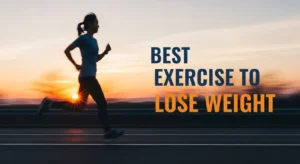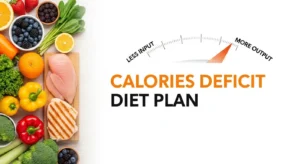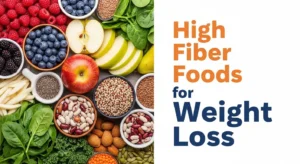Introduction
How many calories does weight lifting burn? More than you might think! However, its role in calorie burning is less commonly understood. While cardio exercises like running or cycling dominate discussions about calorie expenditure, weightlifting deserves recognition as a powerful tool for managing and enhancing your metabolism. Understanding how weightlifting burns calories can help optimize your fitness journey, whether your goal is fat loss, muscle gain, or overall health.
It’s essential to differentiate between the immediate calorie burn during a workout and the longer-term metabolic benefits of strength training. Weightlifting may not burn as many calories per session as cardio, but its ability to build muscle significantly impacts your basal metabolic rate (BMR), which determines how many calories your body burns at rest. By aligning your expectations, you can better appreciate how weightlifting contributes to your fitness goals.
Part 1: The Science of Calorie Burning
1.1 What Is Calorie Burning?
Basal Metabolic Rate (BMR): Calories at Rest
Your BMR represents the number of calories your body requires to maintain essential functions like breathing, circulation, and temperature regulation while at rest. Muscle tissue is metabolically active, meaning individuals with more muscle mass typically have a higher BMR, burning more calories throughout the day.
Active Calorie Burn: Movement and Exercise
Active calorie burn refers to the energy expended during physical activities, including exercise. Weightlifting falls under this category and involves intense bursts of energy as you lift and lower weights, engage stabilizing muscles, and recover between sets.
1.2 How Weight Lifting Burns Calories
The Role of Muscle Engagement
Weightlifting activates multiple muscle groups, leading to a higher calorie burn compared to activities that isolate small muscle groups. Exercises like squats or deadlifts recruit several large muscle groups simultaneously, making them highly effective for energy expenditure.
Comparing Weightlifting to Cardio
Cardio exercises, such as running or cycling, typically burn more calories during the activity. However, weightlifting offers the advantage of the afterburn effect, also known as excess post-exercise oxygen consumption (EPOC), which keeps your metabolism elevated for hours after your workout.
Part 2: Factors Influencing Calorie Burn During Weight Lifting
2.1 Body Composition
Muscle Mass vs. Fat Mass
Muscle is more metabolically active than fat, meaning individuals with higher muscle mass burn more calories, even at rest. Weightlifting’s ability to build muscle directly influences this factor.

How Weight and Height Impact Calorie Burn
Heavier individuals generally burn more calories during exercise because their bodies require more energy to perform the same movements compared to lighter individuals.
2.2 Intensity of Workouts
Light, Moderate, and Heavy Lifting Differences
The intensity of your workout significantly affects calorie burn. Heavier lifting typically demands more energy, increasing calorie expenditure during and after the session.
Measuring Intensity Using METs
Metabolic equivalents (METs) provide a standardized way to estimate the energy cost of physical activities. Weightlifting typically ranges from 3 to 6 METs, depending on intensity.
2.3 Duration and Rest Periods
The Impact of Workout Length
Longer sessions naturally burn more calories, but the intensity should not be sacrificed for duration.
Rest Intervals and Their Effects
Shorter rest periods between sets can keep your heart rate elevated, increasing overall calorie burn during the workout.
2.4 Type of Exercises
Compound Lifts (e.g., Squats, Deadlifts) vs. Isolation Lifts
Compound exercises engage multiple muscle groups and burn more calories compared to isolation exercises that target a single muscle.
Free Weights vs. Machines
Free weights often require additional stabilizing muscles, leading to a higher calorie expenditure compared to machines.
Part 3: Estimating Calories Burned
3.1 Calorie Burn by Weight and Gender
Average Estimates for people of all genders
Men generally burn more calories during weightlifting due to higher muscle mass. For example, a 155-pound individual may burn around 112 calories in 30 minutes of moderate weightlifting, while a 185-pound individual might burn 133 calories.
Adjustments for Different Body Weights
Calorie burn scales with body weight, so heavier individuals can expect higher energy expenditure during the same workout.
3.2 Using Fitness Trackers and Calculators
Benefits and Limitations of Technology
Fitness trackers can provide a general estimate of calorie burn, but their accuracy varies. They often rely on heart rate and user input data, which may not fully capture weightlifting’s unique dynamics.
Popular Apps and Devices for Tracking
Apps like MyFitnessPal and devices like Fitbit or Apple Watch are popular tools for estimating calorie burn. Pairing these tools with manual tracking can yield more accurate results.
3.3 Example Workouts and Their Calorie Burn
Beginner, Intermediate, and Advanced Scenarios
A beginner performing a full-body workout might burn 150-200 calories, while an advanced lifter engaging in high-intensity training could burn 300-400 calories.
Calorie Breakdown by Routine
Detailed breakdowns help tailor expectations, e.g., squats burning 50 calories in 10 minutes vs. bicep curls burning 30 calories.
Part 4: Beyond the Workout
4.1 The Afterburn Effect (EPOC)
How Post-Workout Calorie Burn Works
After intense lifting, your body continues to consume oxygen at an elevated rate, burning additional calories for recovery and repair.
Maximizing the Benefits
To enhance EPOC, focus on high-intensity workouts with short rest periods and compound movements.
4.2 Long-Term Benefits of Strength Training
Increased Metabolism Through Muscle Growth
Building muscle increases your resting metabolic rate, leading to sustained calorie burn even on non-training days.
How Strength Impacts Daily Calorie Burn
Stronger muscles make everyday activities easier and more energy-efficient, subtly increasing daily calorie expenditure.
Part 5: Nutrition and Calorie Management
5.1 Aligning Diet with Training Goals
Calories for Fat Loss vs. Muscle Gain
To lose fat, maintain a calorie deficit; for muscle gain, consume a slight calorie surplus. Balance is key.
Role of Protein, Carbs, and Fats
Prioritize protein for muscle repair, carbs for energy, and fats for hormonal health.
5.2 Common Dieting Mistakes for Weightlifters
Undereating or Overeating
Both extremes can hinder progress. Undereating risks muscle loss, while overeating can lead to fat gain.
Ignoring Macronutrient Balance
Proper macronutrient distribution supports performance and recovery.
5.3 Hydration’s Role in Performance and Calorie Burn
How Dehydration Affects Energy Expenditure
Dehydration reduces workout efficiency, indirectly impacting calorie burn.
Tips for Optimal Hydration
Drink water consistently throughout the day, aiming for 3-4 liters depending on activity level.
Conclusion
Key Takeaways:
Weightlifting burns calories during and after workouts, builds muscle, and boosts metabolism. Factors like intensity, duration, and exercise type influence calorie burn.
FAQs
1. Does weightlifting burn more calories than cardio?
While cardio burns more during the activity, weightlifting’s afterburn effect and muscle-building benefits boost long-term calorie burn.
2. How can I calculate my calorie burn?
Use fitness trackers, or online calculators, or consult a fitness professional for tailored estimates.
3. What are the best exercises to maximize calorie burn during weightlifting?
Compound exercises like squats, deadlifts, and bench presses engage multiple muscle groups and burn more calories.
4. Can I lose weight by just weightlifting?
Yes, especially when combined with a calorie deficit and a balanced diet.
5. How important is diet in achieving weightlifting goals?
Diet plays a crucial role, providing the energy and nutrients needed for performance, recovery, and body composition changes.








